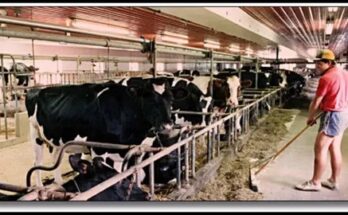U.S. Mining Jobs
The United States has a rich history of mining that dates back centuries, fueling industrialization, technological advancement, and economic growth. Today, the mining industry remains a vital pillar of the U.S. economy, providing essential raw materials for everything from smartphones to renewable energy infrastructure. With a blend of traditional resource extraction and cutting-edge innovation, mining jobs offer competitive wages, career stability, and a chance to contribute to the nation’s infrastructure. This guide explores the landscape of mining jobs in the U.S., highlighting key roles, regional hubs, challenges, and the industry’s evolving future.
The Economic Impact of Mining in the U.S.
- Contribution to GDP:
- The U.S. mining industry contributes $700 billion annually to the economy, encompassing coal, metals, minerals, and non-fuel resources.
- It supports over 1.2 million jobs directly and indirectly, including manufacturing, transportation, and engineering sectors.
- Global Leadership:
- The U.S. is a top producer of coal, copper, gold, and lithium. For example, Nevada alone produces 75% of the nation’s gold.
- Critical minerals like lithium (for batteries) and rare earth elements (for electronics) are increasingly prioritized for renewable energy and tech industries.
- State Reliance:
- Mining is a lifeline for rural economies. States like Wyoming (coal), Arizona (copper), and Minnesota (iron ore) depend heavily on the sector.
Types of Mining Jobs in the U.S.
1. Operational Roles
- Miners and Drill Operators: Extract resources using machinery and explosives.
- Average Salary: 50,000–80,000/year.
- Heavy Equipment Operators: Manage bulldozers, loaders, and haul trucks.
- Average Salary: 60,000–90,000/year.
2. Technical and Engineering Roles
- Mining Engineers: Design mines and optimize extraction processes.
- Average Salary: 90,000–130,000/year.
- Geologists: Survey sites and identify mineral deposits.
- Average Salary: 70,000–110,000/year.
3. Safety and Compliance Roles
- Safety Inspectors: Enforce OSHA and MSHA regulations to prevent accidents.
- Average Salary: 65,000–95,000/year.
- Environmental Specialists: Ensure compliance with sustainability laws and reclamation projects.
4. Management and Support Roles
- Mine Supervisors: Oversee daily operations and staff.
- Average Salary: 80,000–120,000/year.
- Logistics Coordinators: Manage supply chains and equipment transport.
Regional Hotspots for Mining Jobs
1. Nevada
- Focus: Gold, silver, and lithium.
- Key Sites: Carlin Trend (gold), Thacker Pass (lithium).
- Employers: Barrick Gold, Newmont Corporation.
2. Arizona
- Focus: Copper (produces 60% of U.S. supply).
- Key Sites: Morenci Mine (Freeport-McMoRan).
3. West Virginia
- Focus: Coal (though declining, still employs 13,000+).
- Employers: Alpha Metallurgical Resources, Arch Resources.
4. Alaska
- Focus: Zinc, gold, and rare earth elements.
- Key Sites: Red Dog Mine (zinc), Fort Knox Mine (gold).
5. Minnesota
- Focus: Iron ore (supports U.S. steel production).
- Key Sites: Iron Range, PolyMet’s NorthMet Project.
How to Secure a Mining Job
1. Education and Certifications
- Entry-Level: High school diploma + on-the-job training (e.g., MSHA safety certification).
- Advanced Roles: Degrees in mining engineering, geology, or environmental science.
- Vocational Training: Programs in heavy machinery operation (e.g., National Heavy Equipment Operators School).
2. Key Certifications
- MSHA Part 48: Mandatory for surface and underground miners.
- OSHA 30: Workplace safety training.
- Commercial Driver’s License (CDL): For equipment transport.
3. Job Search Strategies
- Online Platforms: Indeed, CareerMine, and company sites (e.g., Caterpillar, Komatsu).
- Unions: United Mine Workers of America (UMWA) offers apprenticeships and job boards.
4. Immigration Pathways
- H-2B Visa: For temporary non-agricultural workers (limited use in mining).
- EB-3 Visa: Skilled worker green card for roles with labor shortages.
Challenges in the U.S. Mining Industry
- Health and Safety Risks:
- Black lung disease in coal miners, equipment-related accidents.
- Environmental Concerns:
- Pollution, water usage, and habitat disruption spark regulatory scrutiny.
- Market Volatility:
- Coal’s decline vs. growing demand for lithium and copper.
- Automation:
- Autonomous drills and AI-driven analytics reduce manual labor needs.
Future Trends Shaping Mining Jobs
- Green Energy Transition:
- Lithium, cobalt, and nickel mining for EVs and batteries (e.g., Tesla’s Nevada Gigafactory).
- Technology Integration:
- Drones for surveying, blockchain for supply chain transparency.
- Sustainable Practices:
- Mine reclamation projects and zero-waste initiatives.
- Workforce Renewal:
- Programs to attract younger workers and veterans (e.g., Mine Training Society).
Why Choose a Mining Career in the U.S.?
- High Earnings: Six-figure salaries for engineers and managers.
- Job Security: Critical minerals ensure long-term demand.
- Adventure: Work in iconic locations like Alaska’s wilderness or Nevada’s deserts.
- Impact: Support infrastructure, tech, and renewable energy sectors.
U.S. Mining Jobs
Mining jobs in the U.S. are more than a career—they’re a gateway to shaping the nation’s future. From extracting copper for wind turbines to pioneering sustainable practices, the industry offers diverse opportunities for growth and innovation. While challenges like automation and environmental concerns persist, the shift toward green energy and advanced technology ensures mining remains a dynamic and essential field. Whether you’re operating a haul truck in Arizona or engineering a lithium mine in Nevada, the rewards of this sector are as vast as the resources beneath America’s soil.
Dig Deeper. Build the Future.
FAQ Section
- Do I need a degree to work in mining?
Not always—equipment operators and miners often start with certifications and training. - Is coal mining still viable?
Employment is declining, but metallurgical coal (for steel) remains in demand. - How does automation affect jobs?
While some manual roles decline, tech maintenance and engineering jobs grow. - Are there opportunities for women?
Yes! Women now make up 14% of the workforce, with initiatives promoting diversity. - What’s the work schedule like?
Rotational shifts (e.g., 14 days on/14 days off) are common in remote sites.



